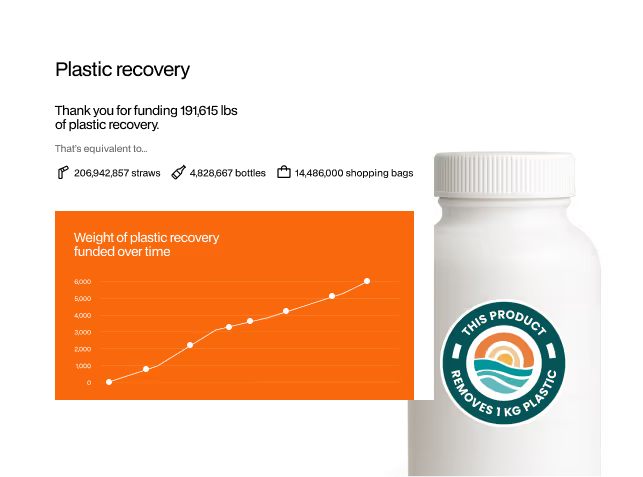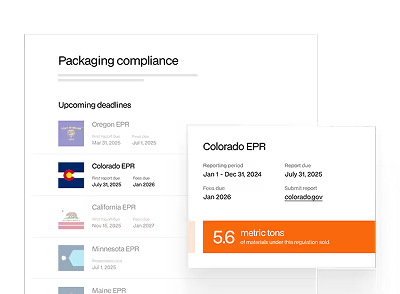A plastic footprint is the total weight of plastic used or produced, over a defined period of time. Plastic footprints can apply to individuals, businesses, other entities, or one-off activities such as events. Being aware of your plastic footprint is important: the insight can empowers you to take more meaningful and impactful environmental action.
While a simple plastic footprint might calculate the total weight of plastic used, a more detailed footprint can also include information about the types of plastic polymers used, and their potential end destinations or likelihood of being recycled.
Read on to learn how a business can measure its plastic footprint, the benefits of footprint measurement, and tips for plastic reduction.
How is a business’ plastic footprint calculated?
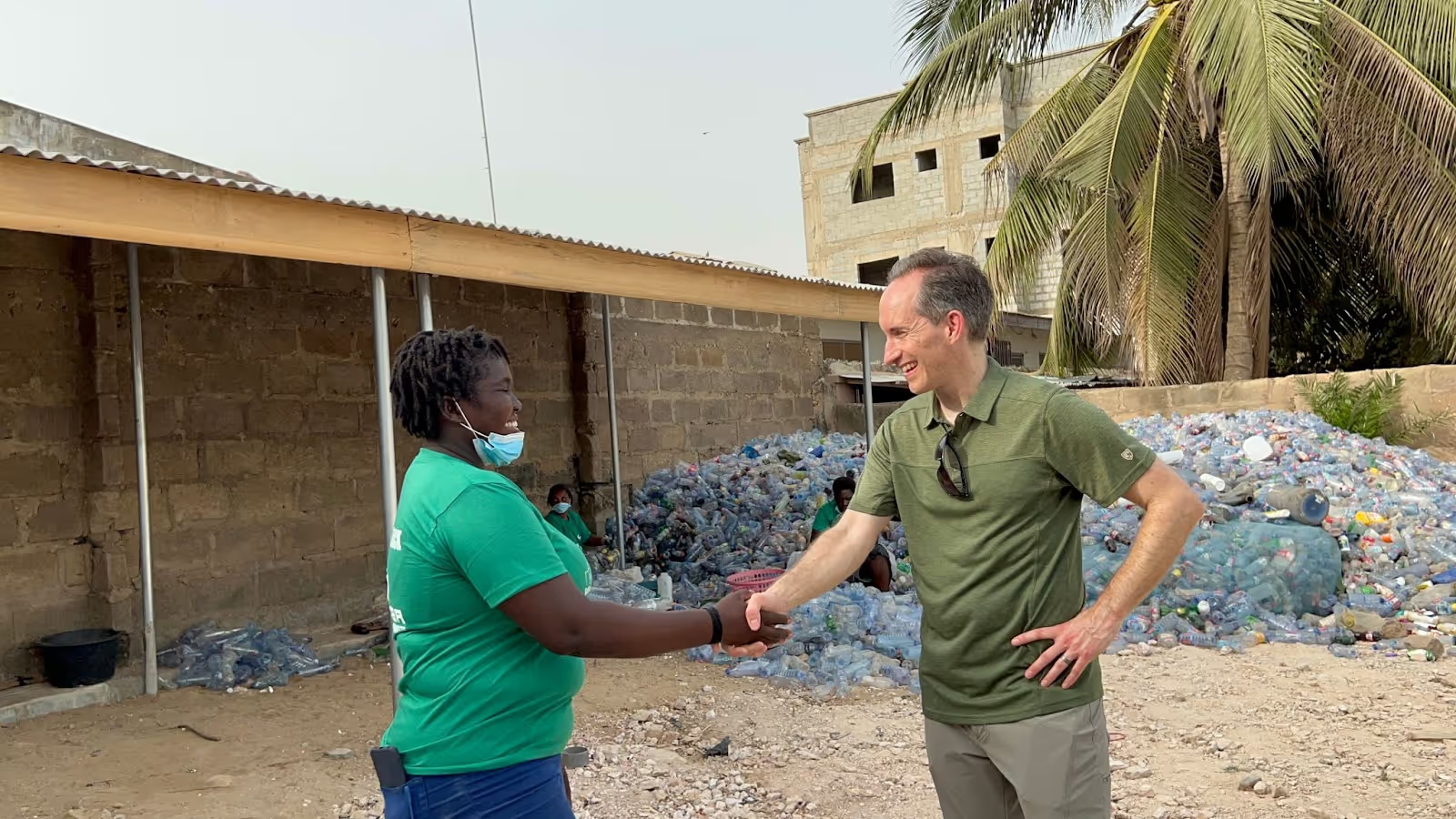
For some brands, a simple plastic footprint estimate is relatively straightforward – measure the amount (and type) of plastic you are using in your products and packaging, and multiply this by the number of units sold.
To make a more holistic assessment of a business’ plastic footprint, however, rePurpose Global categorizes an organizational plastic footprint into different tiers which represent plastic at different points in the value chain:
- Tier 1: Plastic used in a product, and its primary and secondary packaging
- Tier 2: Upstream Operational (in-bound plastic packaging); Operational (plastic used in a brand’s operations); and Downstream Operational (plastic used in shipping and distribution to the next member in the value chain)
- Tier 3: Plastic used in manufacture of packaging
- Tier 4: Plastic that is only handled by the retailer and consumer (e.g. plastic bags)
- Tier 5: Plastic used in monomer/polymer production or raw material extraction

Measuring a company’s Tier 1 plastic use provides a reasonable estimate of a product’s plastic footprint. To get a truer reflection of an organization’s plastic footprint (i.e. not just directly related to products), both Tier 1 and Tier 2 plastic should be included. This includes plastic that is generally within an organization’s control, such as that used in operations, offices, or distribution.
Tiers 3-5 are trickier - much like Scope 3 carbon emissions. Plastic in these tiers could be counted as plastic use by other actors in the value chain. By some measures this would not fall into a business’ footprint measurement.
However, a more comprehensive approach to an organization’s footprint would look at responsibility for plastic use up and down the value chain - if the brand was not operating, there are situations where the (Tier 3-5) plastic would not have been used. A full footprint assessment would, for example, include any plastic used in a factory during product manufacturing, in retail, and during raw material collection. As most organizations have some influence over their supply chains, those that want to go above and beyond, can implement guidelines for regulating plastic use to prevent excessive use and unnecessary wastage.
This complexity and shared responsibility could start to cloud the picture of what a footprint is. To help establish guidelines on what should be included in a plastic footprint measurement, rePurpose Global has developed 5 Principles of Plastic Footprint Calculation. These principles aim to ensure fair, accurate and consistent measurement across all brands.
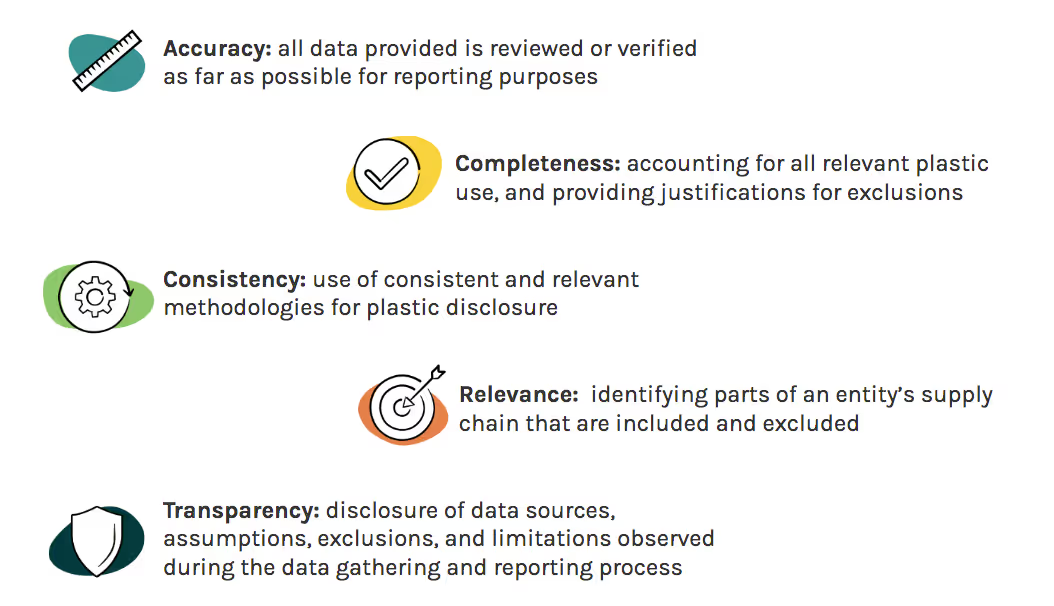
For a full breakdown of rePurpose Global's Plastic Disclosure Methodology, please click here.
What are the benefits of measuring a business's plastic footprint?
There are many benefits to calculating a business’s plastic footprint. It helps to understand the organization's contribution to the plastic problem, track progress, and take meaningful action.
Maybe the organization wants to find the easiest or most impactful areas for plastic reduction. Or maybe they want to look into plastic neutrality as an option. Either way, they need to understand their impact first.
Calculating a business plastic footprint also creates a baseline for reduction strategies and gives brands something to report progress against, empowering them to meet internal or external commitments to plastic reduction. Initiatives like the Ellen MacArthur Foundation’s Global Commitment and the Plastics Pact Network have called for brands to disclose their plastic packaging volumes (often a key part of plastic footprints). Other businesses have their own ESG reporting commitments, or requirements to adhere to ISO standards.
Plastic footprint measurement experts also have industry-level benchmarking data that can help brands to compare and contrast plastic consumption levels with similar companies within a particular sector.
How can a business reduce their plastic footprint?
Our experience of working with different brands across the CPG industry has shown that many brands in home care, food & beverage, and personal care sectors struggle to eliminate plastics from their supply chains completely. These industries often require plastic to ensure product stability and efficient transportation.
Here are some actions that you can follow to reduce your business’ plastic footprint:
- Avoid and minimize the use of plastic wherever possible: Reduce your plastic footprint by eliminating plastic products or minimizing plastic use. This can be by curbing unnecessary use of plastic, switching to alternate materials (bio-based plastic, paper, glass, metal, compostables), and piloting reuse systems that allow the consumer to use the packaging of the product repeatedly. For example, Burger King UK has introduced reusable, returnable, and refundable plastic cups to replace throwaway plastic cups in select locations in the UK.
- Use PCR (recycled) content: Source and use recycled plastic where possible. In doing so, you can play a proactive role in creating a market for recycled plastics. This helps to incentivize recycling and builds a more circular production model for plastic products. Paper recycling has been long established in Western Europe, and now nearly 75% of paper is made from recycled content rather than virgin pulp – we envision a similar future for plastics.
- Make recycle-friendly plastic products: If you’re not able to eliminate plastic from products and packaging right away, use plastics that are easily recyclable. Typically this means avoiding multi-layer plastics and plastics fused to other materials. While doing this will not directly reduce your overall plastic footprint, it will help your plastic products to have another life. For instance, Sprite has replaced its less recyclable (but iconic) green bottles with more recyclable clear PET bottles.
- Balance your plastic footprint: Certifications like rePurpose Global’s Plastic Neutral give you the chance to calculate a product footprint and take action equivalent to any unavoidable plastic use through waste recovery projects – though you will only be eligible if making reduction efforts simultaneously. Initiatives like this mean plastic pollution is avoided, and can also be extremely beneficial to waste workers.
Final Thoughts
We cannot manage what we do not measure. Managing our plastic consumption and reducing plastic waste can happen more effectively when we are aware of our plastic footprint.
As experts on plastic footprint measurement, plastic action platforms like rePurpose Global help brands to phase out unnecessary plastics and develop strategies that help businesses take positive environmental steps — and it all begins with understanding your plastic footprint.
Get in touch with our team today to learn how we can help. Our services include footprint analysis, reduction advisory, and redesign strategies, that can help your business reduce its plastic footprint.

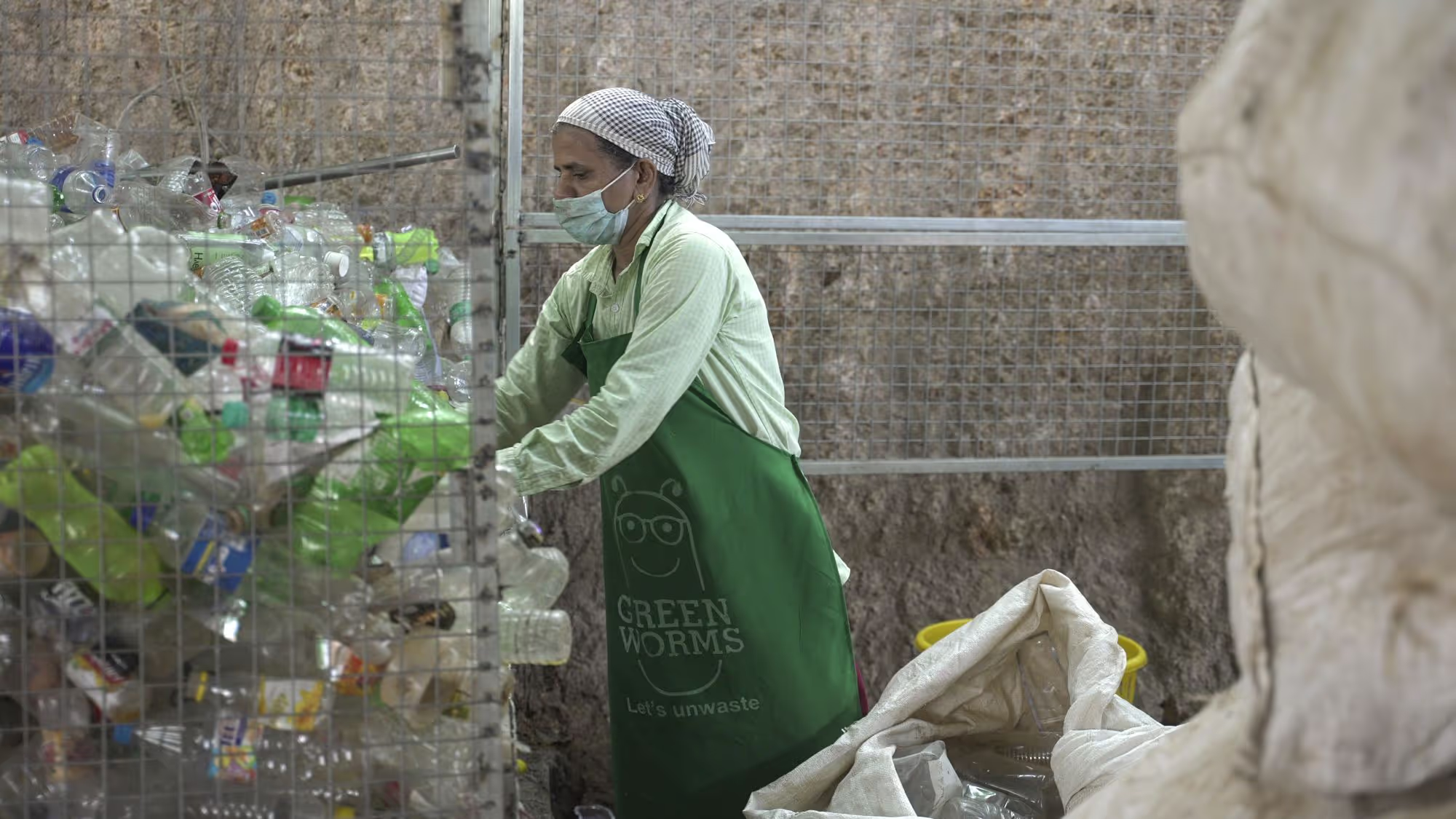

.avif)
.png)
.png)




